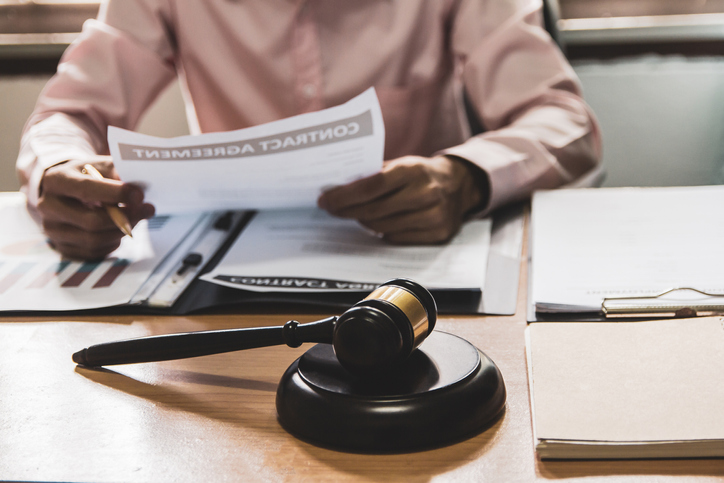Being convicted of a crime can have dire life-long consequences for an individual and their loved ones. Most people think the only options they have following a conviction are to serve the punishment or appeal the court’s decision to a higher court. However, there is also another avenue where one can challenge the court’s decision.
This is where post-conviction relief comes in. This option allows previously convicted persons to seek relief from the conviction if the charges against them were unfounded, penalties are deemed overly severe, or any other valid reason. Understanding what post-conviction relief means and how it works is essential to help you obtain a favorable resolution in your case.

Post-conviction Relief: What is it?
A conviction can significantly impact an individual’s future job prospects, education, and other aspects of their life. Post-conviction relief is a legal process where a formerly convicted individual challenges the outcome of their judgment, seeking to have it modified, overturned, or expunged.
Post-conviction relief is similar to a post-trial motion, meaning the arguments are filed with the trial court, not the appeals court. This relief is typically available to defendants who have exhausted all their direct appeals and still wish to challenge their conviction.
Six Types of Post-conviction Relief
Some common types of post-conviction relief in California include:
Writ of Habeas Corpus
Habeas corpus is a last resort post-conviction relief that allows an individual to be released from prison on the grounds that they were illegally incarcerated. It can be filed if there is evidence of significant mistakes during the original trial or new evidence questioning the guilty verdict.
Motion for New Trial
Under California Penal Code 1181, a defendant can bring a motion for another trial if convicted. This involves requesting the court for a do-over of one’s criminal case if they believe the original trial was improperly conducted. One must file a motion for a new trial before a sentencing hearing or a probation sentence can start. If the court denies this motion, the original guilty verdict stands, but one can still appeal their case.
Resentencing
Resentencing involves requests to have the original sentence modified. Most defendants seek this post-conviction relief to be released from custody or have their probation conditions modified. For example, one can request re-sentencing to obtain a reduced sentence.
Commutation
Commutation involves a reduction or lifting of one’s sentence from the governor. However, if the defendant has more than two felony convictions, a majority of California Supreme Court justices must consent for commutation to be allowed.
Motion to Withdraw a Plea
A motion to withdraw a plea, also called a ‘motion to vacate judgment,’ is typically sought when the defendant can demonstrate that the plea was entered unknowingly, involuntarily, or unintelligently. This can also happen if the defendant had ineffective legal representation or their attorney did not explain everything thoroughly.
Expungement
Expungement involves removing a conviction from a defendant’s criminal record, making it appear as if it never happened. Expungement relieves defendants who have completed their sentence and want to continue with their life without the social stigma of a criminal record.
Who is Eligible for Post-conviction Relief?
Anyone convicted of a crime and has exhausted all direct appeals can pursue post-conviction relief. However, specific eligibility requirements must be met. You may qualify for post-conviction relief if:
- There were errors or mistakes made at trial
- You were pronounced guilty of a felony that can be reduced to a misdemeanor
- New indisputable evidence is introduced
- The state failed to apply appropriate statutes to your case
- You were not advised of your constitutional rights or the consequences of your plea agreement
How Does the Post-Conviction Relief Process Work?
The post-conviction relief process begins with your post-conviction relief attorney gathering relevant court records from your conviction. He will then review the circumstances of your case to ensure you are eligible for post-conviction relief.
After that, they will prepare the motion, file a notice requesting the trial court for relief, and litigate the claim. If successful, the court issues a court-ordered certification stating the outcome of the process. This can be a reduction or modification of vacation of your charges.
You have to file the notice within the specified time frame. Otherwise, the court may dismiss or refuse your motion, even if you have valid reasons for the request. Therefore, if you would like to pursue post-conviction relief, consult with an experienced post-conviction relief attorney immediately to ensure you meet all deadlines and increase your chances of a favorable outcome.
Contact the Competent Los Angeles Post-Conviction Attorney Today
If you or someone you know is considering post-conviction relief, contact our skilled post-conviction relief lawyers at Kosnett Law Firm in Los Angeles, California, today to schedule a free initial consultation by calling (310) 445-5900. We can fight for you to get the best possible results.






